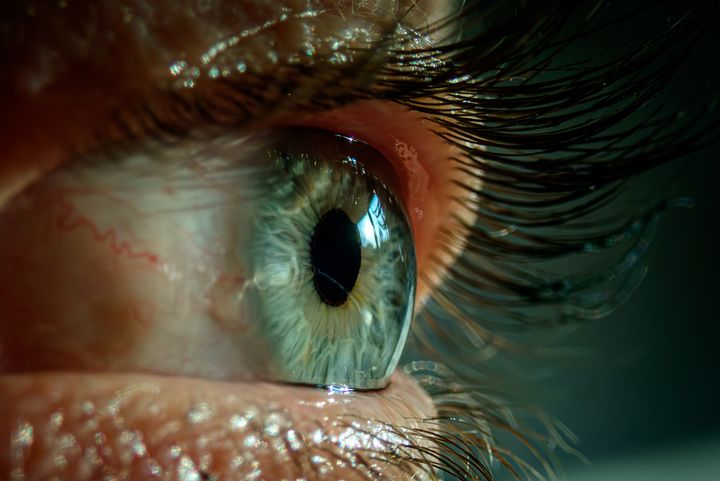
You might call it sleep in your eye, eye crust, or simply goop, it turns out there’s a proper name for the thin layer of dried gunk that forms in the corner of your eye when you sleep ― its medical name is rheum.
And, despite its association with a good night’s sleep, we actually excrete rheum throughout the day; our eyes just usually blink the substances away when we’re awake.
You might have noticed that the amount and vividness of your eye crust changes when you’re a little bit under the weather. Well, it turns out that the hue of your rheum can reveal a lot more about your health than you’d expect ― so we thought we’d share what each colour means.
Why do we get sleep crust?
Your eye has something called a tear film which helps to protect it. This includes mucus that conjunctiva in the corner of your eye excrete throughout the day.
When you’re asleep, you can’t blink extra mucus (rheum) away, so it forms a film around your eyes which then dries and appears crusty.
Like with regular mucus, this changes colour according to your health.
What if I have clear or yellow eye crust?
This is likely healthy, especially if the yellow is paler. This may be thin and crusty or thick and sticky and still be in the “normal” range.
However, having more eye crust than usual ― no matter what colour ― can be a sign of eye conditions, like blepharitis and dry eye. If you struggle to open your eyes or your rhuem is especially thick and sticky, that’s another sign of health issues.
What if my eye crust is green or white?
This can be a sign of infection, as it signals a lot of dead white blood cells ― the ones your body uses to battle disease.
You could have a common cold, conjunctivitis, dry eye, a stye, allergies, or even corneal ulcers.
What if my eye crust is grey?
This can be a sign of bacterial conjunctivitis (pink eye), especially if it’s thick and sticky.
Viral or allergic conjunctivitis, on the other hand, tends to have a more thin and watery discharge.
How can I clean gunk from my eye?
Bear in mind that eye infections can be very contagious. Don’t use your hand to wipe the gunk away, as this can spread the disease ― instead, soak a disposable cotton round in warm but not hot water and gently lay it on your eye, every so slightly rubbing the affected area.
Use a different cotton round for each eye.
When should I see a doctor about eye crust?
If you wear contact lenses and notice conjunctivitis symptoms as well as spots on your eyelid, see your GP, the NHS says. This is because you could be allergic to contacts.
If your symptoms don’t clear up after two weeks or if your baby has red eyes, you should also see a GP, they add.
Get an urgent appointment or call 111 if your baby under 28 days has oink eyes, if your eyes are painful, if you’re sensitive to light, if you have wavy lines, flashing, or other vision changes, or if your eye or eyes are very red.